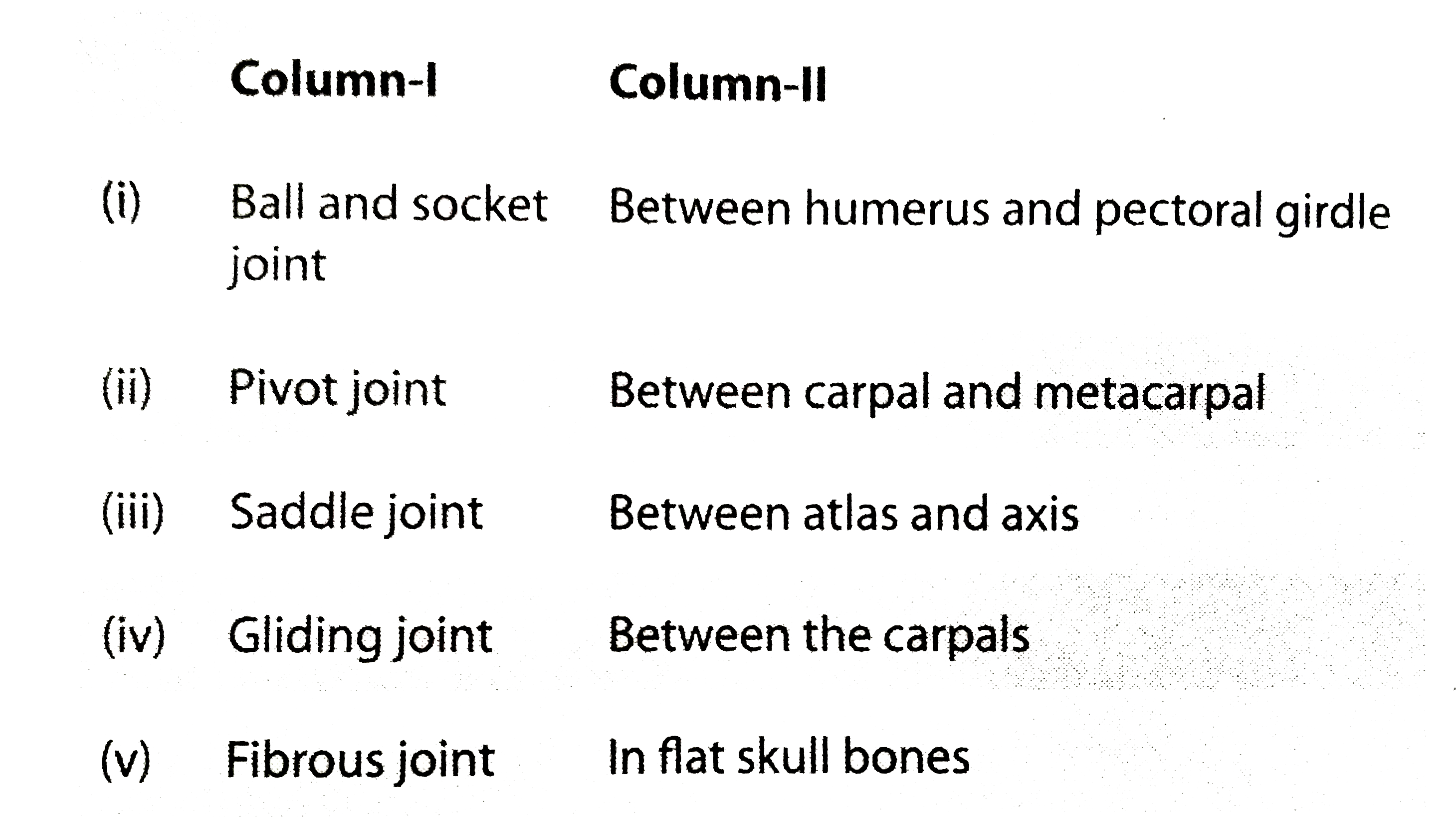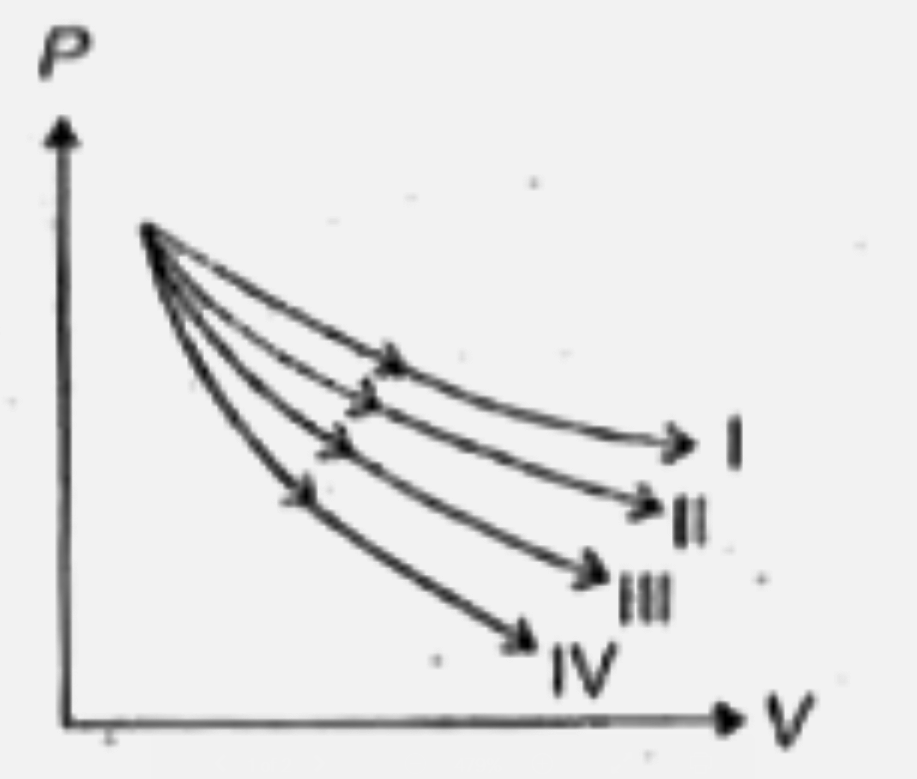Match the following:
(i) Magnetic quantum number -(a) Optical isomerism
(ii) Boron halides -(b) Sodium carbonate
(iii) Lactic acid -(c) Orientation of the orbital
(iv) Solvay.s process -(d) Lewis acid.
The correct Answer is:Match the following:
(i) -c
(ii) -d
(c ) -a
(d) -b
To solve the matching question, we need to analyze each item in Table 1 and find its corresponding match in Table 2 based on their definitions and properties.
1. Magnetic Quantum Number (i):
- The magnetic quantum number (m_l) is associated with the orientation of orbitals in a subshell. It indicates the specific orbital within a subshell where an electron is likely to be found.
- Match: (i) Magnetic quantum number - (c) Orientation of the orbital.
2. Boron Halides (ii):
- Boron halides, such as BF3 and BCl3, are known to be electron-deficient compounds. They do not have a complete octet and can accept electrons, thus behaving as Lewis acids.
- Match: (ii) Boron halides - (d) Lewis acid.
3. Lactic Acid (iii):
- Lactic acid is a compound that contains a chiral carbon atom, which has four different groups attached to it. This property allows lactic acid to exhibit optical isomerism, where two enantiomers can exist.
- Match: (iii) Lactic acid - (a) Optical isomerism.
4. Solvay's Process (iv):
- The Solvay process is an industrial method used to produce sodium carbonate (soda ash) from sodium chloride (brine), ammonia, and carbon dioxide. Therefore, it directly relates to the production of sodium carbonate.
- Match: (iv) Solvay's process - (b) Sodium carbonate.
Final Matches:
- (i) Magnetic quantum number - (c) Orientation of the orbital
- (ii) Boron halides - (d) Lewis acid
- (iii) Lactic acid - (a) Optical isomerism
- (iv) Solvay's process - (b) Sodium carbonate
Summary of Matches:
1. (i) - (c)
2. (ii) - (d)
3. (iii) - (a)
4. (iv) - (b)
---
- The magnetic quantum number (m_l) is associated with the orientation of orbitals in a subshell. It indicates the specific orbital within a subshell where an electron is likely to be found.
- Match: (i) Magnetic quantum number - (c) Orientation of the orbital.
- Boron halides, such as BF3 and BCl3, are known to be electron-deficient compounds. They do not have a complete octet and can accept electrons, thus behaving as Lewis acids.
- Match: (ii) Boron halides - (d) Lewis acid.
- Lactic acid is a compound that contains a chiral carbon atom, which has four different groups attached to it. This property allows lactic acid to exhibit optical isomerism, where two enantiomers can exist.
- Match: (iii) Lactic acid - (a) Optical isomerism.
- The Solvay process is an industrial method used to produce sodium carbonate (soda ash) from sodium chloride (brine), ammonia, and carbon dioxide. Therefore, it directly relates to the production of sodium carbonate.
- Match: (iv) Solvay's process - (b) Sodium carbonate.
- (i) Magnetic quantum number - (c) Orientation of the orbital
- (ii) Boron halides - (d) Lewis acid
- (iii) Lactic acid - (a) Optical isomerism
- (iv) Solvay's process - (b) Sodium carbonate
1. (i) - (c)
2. (ii) - (d)
3. (iii) - (a)
4. (iv) - (b)
Topper's Solved these Questions
- SAMPLE QUESTION PAPER -1Book:ICSEChapter:SAMPLE QUESTION PAPER -1Exercise:Answer the following questions:
Explore 28 Videos
- SAMPLE QUESTION PAPER -1Book:ICSEChapter:SAMPLE QUESTION PAPER -1Exercise:Multiple choice question
Explore 4 Videos
- SAMPLE QUESTION PAPERBook:ICSEChapter:SAMPLE QUESTION PAPERExercise:Question
Explore 69 Videos
- SAMPLE QUESTION PAPER -2Book:ICSEChapter:SAMPLE QUESTION PAPER -2Exercise:Questions & Answers
Explore 10 Videos
Similar Questions
Which of the following is (are) an endothermic process(es)?
(i) Dilution of sulphuric acid
(ii) Sublimation of dry ice
(iii) Condensation of water vapours
(iv) Evaporation of water
View SolutionWhich of the following is/are not carrectly mathched pairs ?

(a) (ii) and (iii)
(b) (i) and (iv)
(c) (v) only
(d) (ii) only
View SolutionMatch the following:
(i)Heating of alkyl halide(a)Complex of ether withand sodium alkoxideLewis acid(ii)Lewis base(b)Combination of ether withinorganic acid(iii)Oxonium salt(c)Willamson synthesis(iv)Etherate(d)Ether(v)Tetrahydrofuran(e)Cyclic ether
View SolutionMatch the following:
(i) Diazotisation(a) Bakelite(ii) Argentite(b) Nernst equation(iii) Thermosetting plastics(c) Aniline(iv) Electrochemical cell(d) Ethylenediamine(v) Bidentate ligand(e) Froth floatation process
View SolutionIn the following plots match I,II, III,Iv with (a) isothermal process and Adiabatic process for (b) monatomic, (c ) diatomic and (d) triatomic gases respectively.

View SolutionName the natural source of each of the following acid (i) Citric acid. (ii)Oxalic acid. (iii)Lactic acid. (iv)Tartaric acid.
View SolutionWrite the IUPAC names of the following compounds : (i) t-butyl alcohol (ii) Lactic acid (iii) Isobutyl alcohol (iv) Glycerine (v) Glycine.
View SolutionSelect acidic gases from the following
(i) Ammonia
(ii) Sulphur dioxide
(iii) Hydrogen chloride
(iv) Chlorine
(v) Carbon dioxide
(vi) Oxygen
(vii) Hydrogen .
How is the acidic nature verified ?
View SolutionMatch the following:
(a)pure nitrogen(i) chlorine(b) Haber process(ii) Sulphuric acid(c) Contact process(iii) Ammonia(d) deacon's process(iv) Sodium azide or Barium azide
View SolutionMatch the following : Column A-1. Acid salt, 2. Normal salt- with-
Column B- A. Sodium potassium carbonate, B. Alum, C. Sodium carbonate, D. Sodium zincate, E. Sodium hydrogencarbonate
View Solution